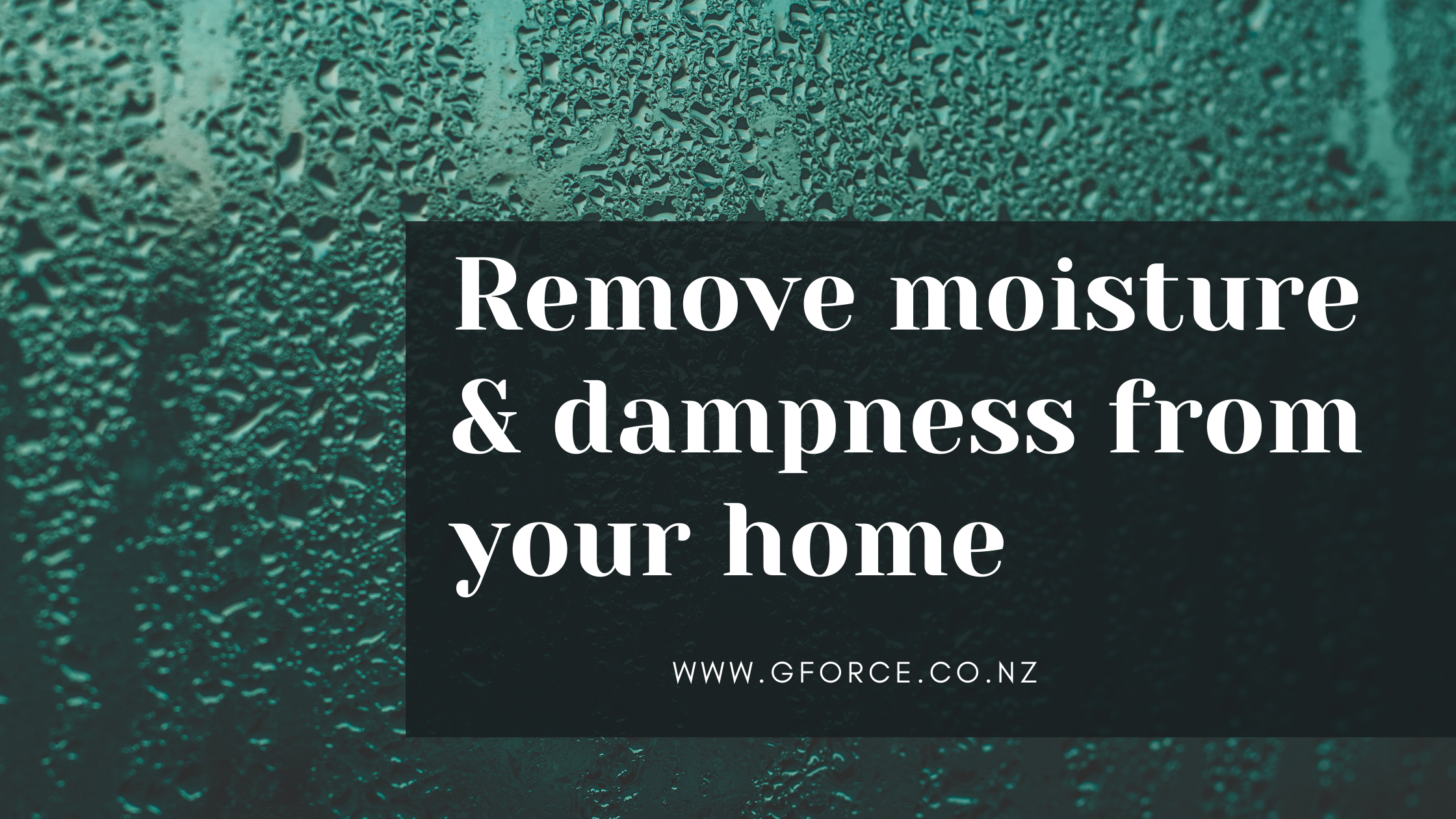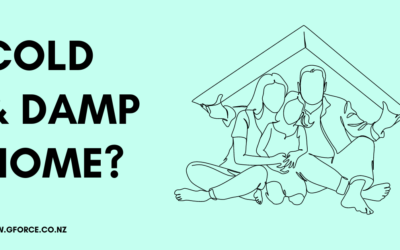Tackle dampness from the bottom to the top with this great article from www.mitre10.co.nz on how to remove moisture & dampness from your home.
Dampness is a serious problem in many New Zealand homes. Mould and dust mites thrive in these conditions, and they can lead to allergies, asthma and severe respiratory illnesses. Damp air also requires more energy to heat than dry air, so it means higher power bills through the colder months. New Zealand has a lot of older wooden homes that are prone to dampness, but the issue doesn’t stop there. Many of us could make our homes healthier and more comfortable by addressing the issues that lead to excess moisture.
Signs of excess moisture
- Musty smells in rooms that are closed for any period of time.
- Damp or mouldy clothes in wardrobes.
- Mould or mildew forming on ceilings and walls, as well as behind paintings, mirrors, etc.
- Stains or watermarks on ceilings or walls.
- Problems with areas of rotting wood in the structure of your house.
- Mould under your house.
How to prevent excess moisture in your home
1 Ventilating
A lack of ventilation is one of the main sources of dampness. It can easily be remedied or reduced by letting moist air out and dry air in.
- Opening your windows – especially in wet areas such as bathrooms and kitchens.
- Fixing any leaks in the roof or around windows.
- Getting in the habit of airing your home every day or leaving windows slightly open. You will have to heat the drier outdoor air, but it will be easier to heat than the moist indoor air.
- Closing doors while cooking or bathing to contain steam or condensation in the kitchen and bathroom.
- Using extractor fans in bathrooms and kitchens. Always vent them outside.
- Stopping draughts by using draught seal tape around windows and doors.
- Blocking off unused chimneys to prevent cold air from entering. Note that a sealed chimney should never be airtight as this can cause issues much larger than draughts.
- Fitting some heavy, sized-to-suit curtains. Draw them on winter nights to help retain heat gained from the sun during the day.
- Keeping the rooms in your home ventilated and warm during winter – at least 7°C warmer than outside temperatures.
2 Dehumidifiers
A dehumidifier will keep homes free from condensation by removing moisture from the air and making it drier and healthier. To get the most out of your dehumidifier:
- Target parts of the home that don’t get enough airflow and remain damp. It’s best to place it in the centre of the room.
- Empty the tank every day, or after each use.
- Don’t run it while you have windows and doors open to ventilate your home.
- Clean your dehumidifier frequently to ensure optimal performance.
3 Moisture Barriers
To prevent damp air from building up under the floor:
- Install underfloor insulation. The floor accounts for 10% of heat loss, so this will also reduce the amount of energy used in heating.
- Install a ground vapour barrier. This is a thick polythene sheeting installed on the ground under your house. It keeps moisture in the ground and stops air under the floor from getting damp.
- Make sure water isn’t draining from paths or gardens under the house. You may need to create channels or underground drains to divert surface run-off.
4 Mould Prevention & Cleaning
Mould is known to cause inflammation, allergies and infections. Cleaning it up isn’t always easy, so keep in mind:
- Removing mould from hard, non-porous surfaces such as glass or ceramic tile is a straightforward process.
- Removing mould from porous substances such as wallboard, wood and carpets is both more difficult and more hazardous. This is because spores can be released when disturbing rotten material and these can escape and have a negative impact on your air quality.
- DampRid’s disposable moisture absorber is the perfect way to prevent moisture damage as well as build-ups of mould and mildew in damp areas of your home, garage, or vehicle. This moisture absorber also effectively eliminates odours and reduces allergens.
5 Stay Vigilant
There are a number of small behavioural changes you can make to avoid unnecessary build-up of condensation in your home. Try these simple hints.
- During the colder months you should use low levels of heat all the time rather than high levels in short bursts. This reduces condensation.
- Always use close fitting lids on pots when cooking and fit extractor fans over the cooktop or stove, and in the bathroom (these must be ducted to the outside).
- Install a shower dome above your shower. They collect condensation and send it down the drain.
- Leave wardrobes slightly open. A little air circulation discourages mould growing on fabric.
What you need to know
Landlords
Before to the beginning of a tenancy, you’ll need to eliminate any accumulation of moisture and adverse effects from dampness, damage, condensation or fungal growth to ensure it doesn’t cause harm to those using and/or living in that environment. If the rental property has an enclosed subfloor, then you will need to install a ground moisture barrier if it is reasonably practicable to do so.
Homeowners
Installing a ground moisture barrier is one of the best things you can do to keep your home dry and warm.
Renters
The best way to prevent moisture is to ensure your home is properly ventilated. This means opening the windows for at least ten minutes a day, and using kitchen and bathroom vents when cooking or showering. You can also invest in a dehumidifier to pull excess moisture out of the air, and if you spot a build up of mould, it’s best to clean it as soon as possible with an indoor mould remover.
GET IN TOUCH WITH THE G-FORCE TEAM TO CHAT ABOUT THE BEST WAY TO REMOVE MOISTURE & DAMPNESS FROM YOUR HOME
YOU MIGHT FIND THESE RESOURCES HELPFUL
- Cold and Damp Home? Why YOUR HOME’S Indoor Air Quality Matters
 We spend a significant amount of time indoors – at home, at work, even in our cars. It’s easy to assume that because these spaces offer shelter, they must be healthy environments. But the truth is, a poor indoor environment can have a surprisingly big impact on our health, especially a cold and damp home.… Read more: Cold and Damp Home? Why YOUR HOME’S Indoor Air Quality Matters
We spend a significant amount of time indoors – at home, at work, even in our cars. It’s easy to assume that because these spaces offer shelter, they must be healthy environments. But the truth is, a poor indoor environment can have a surprisingly big impact on our health, especially a cold and damp home.… Read more: Cold and Damp Home? Why YOUR HOME’S Indoor Air Quality Matters - EECA BUILDING EXPERT SHARES TIPS FOR HAVING A WARM HOME ON A BUDGET
 EECA building expert Dr Gareth Gretton shares some tips on how to prepare your home. How quickly the cold seeps into your home depends a lot on how well it’s insulated, Gretton said. “The best place to start is actually underneath… that keeps the heat in and stops the drafts coming up.” He recommends checking… Read more: EECA BUILDING EXPERT SHARES TIPS FOR HAVING A WARM HOME ON A BUDGET
EECA building expert Dr Gareth Gretton shares some tips on how to prepare your home. How quickly the cold seeps into your home depends a lot on how well it’s insulated, Gretton said. “The best place to start is actually underneath… that keeps the heat in and stops the drafts coming up.” He recommends checking… Read more: EECA BUILDING EXPERT SHARES TIPS FOR HAVING A WARM HOME ON A BUDGET - GET AN INSTANT HEAT PUMP QUOTE
 The crisp mornings and cool evenings are a gentle reminder that winter is truely on its way. For many homeowners, this means prepping the trusty heater and hoping it survives another season. But what if there was a more efficient, cost-effective way to keep your home cozy? Enter the heat pump! Heat pumps have become… Read more: GET AN INSTANT HEAT PUMP QUOTE
The crisp mornings and cool evenings are a gentle reminder that winter is truely on its way. For many homeowners, this means prepping the trusty heater and hoping it survives another season. But what if there was a more efficient, cost-effective way to keep your home cozy? Enter the heat pump! Heat pumps have become… Read more: GET AN INSTANT HEAT PUMP QUOTE - How do I get AN insulation GRANT IN NZ?
 The Warmer Kiwi Homes Government programme offers insulation grants to low-income home owners (you must be a owner-occupier). You can get 80% paid for by the warmer kiwi homes grant.
The Warmer Kiwi Homes Government programme offers insulation grants to low-income home owners (you must be a owner-occupier). You can get 80% paid for by the warmer kiwi homes grant. - MARCH HEAT PUMP SERVICE SPECIAL*
 Heading into winter is a great time to get a heat pump service. Check out our Heat Pump Servicing special below and book your clean in so you can enjoy a warm home this winter. Specialoffer $170 + gst
Heading into winter is a great time to get a heat pump service. Check out our Heat Pump Servicing special below and book your clean in so you can enjoy a warm home this winter. Specialoffer $170 + gst - How much does it cost to install a heat pump NZ?
 Heat pumps are good for your wallet and the environment but how much does it cost to install a heat pump in New Zealand? Below we will cover some different types of models, their costs – which also includes installation cost.
Heat pumps are good for your wallet and the environment but how much does it cost to install a heat pump in New Zealand? Below we will cover some different types of models, their costs – which also includes installation cost.



